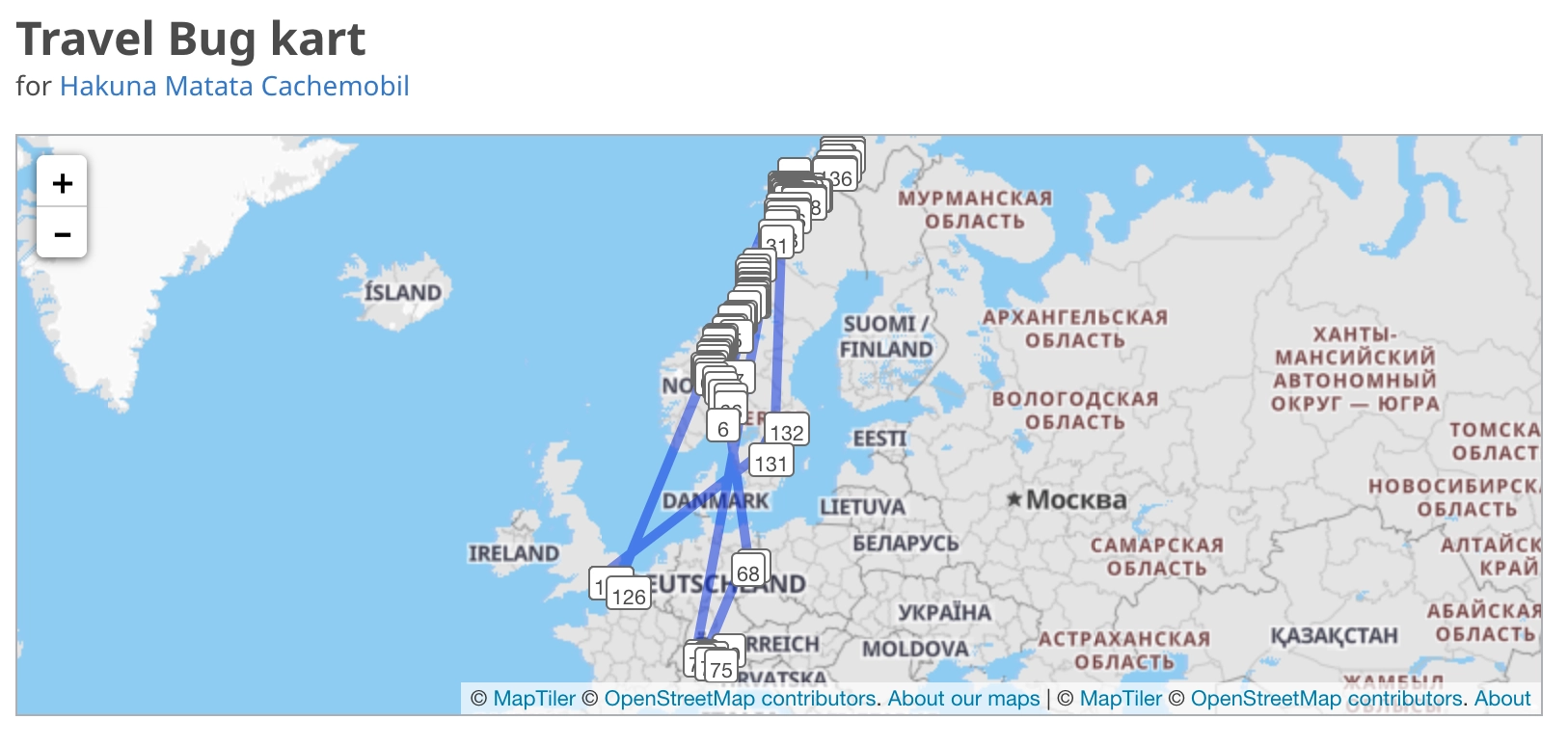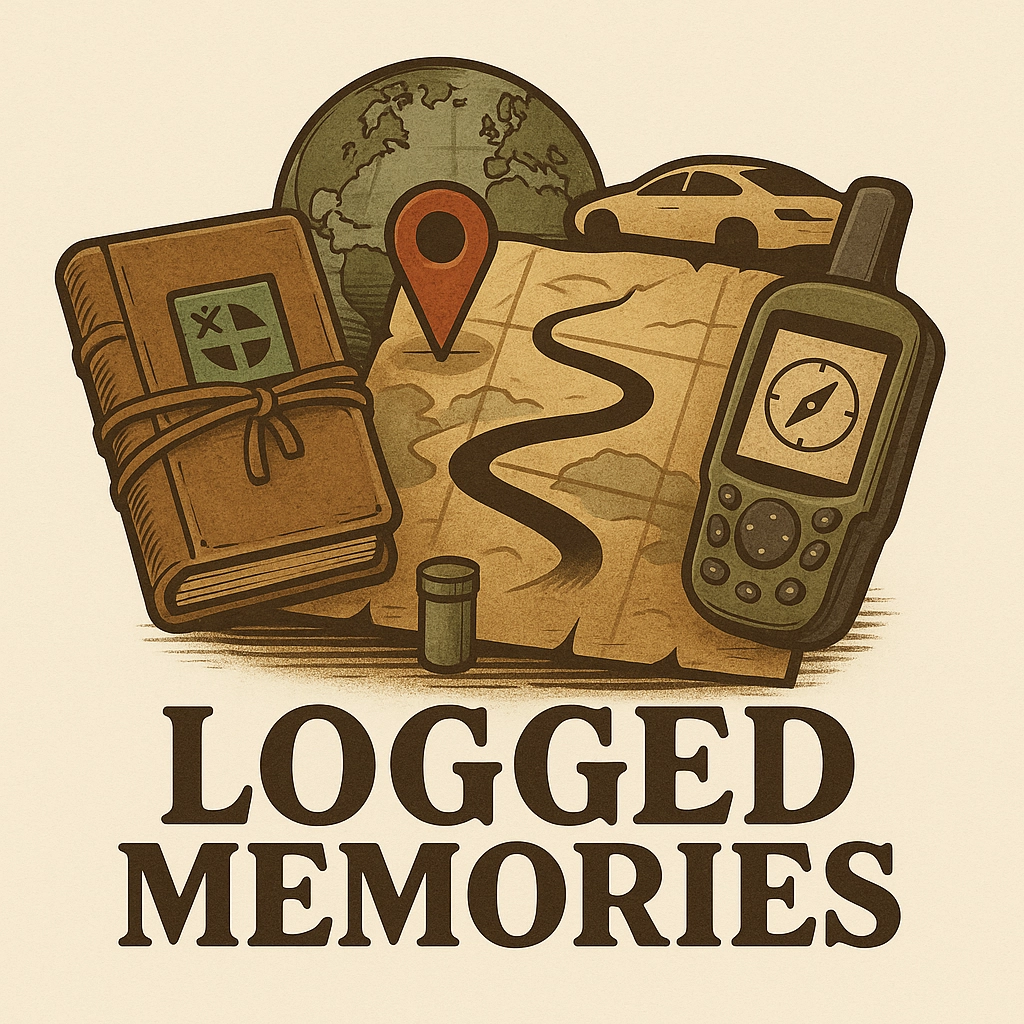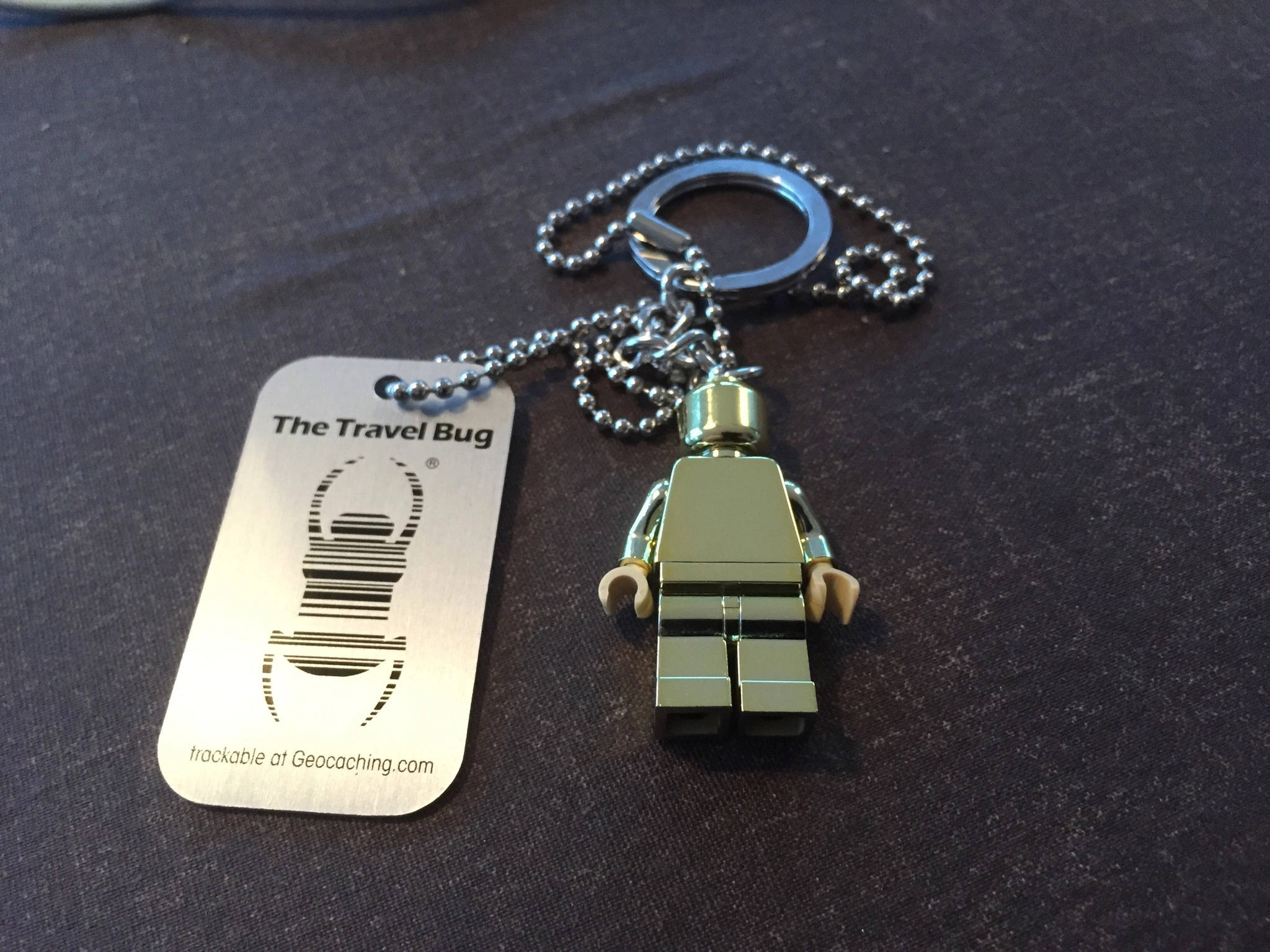A Travel Bug, often called a TB, is a small tag with a unique tracking code that can be attached to an object – anything from a keychain to a small toy. It's designed to travel from cache to cache, often with a goal of visiting specific locations or countries 🌍.
Travel Bugs can be purchased from Geocaching.com and come with a metal tag and code. Many are attached to a personal item, like a souvenir or figurine, giving them personality and a story 📦.
🔄 How does it work?
When you find a Travel Bug in a cache, you can log that you found it, and then help it on its journey by placing it in another cache 📬.
There are three main actions you can take when logging:
Discover: You saw it, but left it in the cache 👀.
Retrieve: You picked it up 🛍️.
Drop: You placed it in a new cache 📍.
Each action is recorded online so the owner (and others) can track its journey 🌐.
📏 Important Rules for Travel Bugs
Don't keep it – Travel Bugs are owned by someone else. The goal is for them to travel, not be collected 🚫.
Only take it if you plan to move it to another cache within a reasonable time (ideally within two weeks) ⏳.
Log it properly! Use the correct tracking code and select the right action when logging ✅.
Avoid dropping them in hard-to-reach caches – like those requiring special equipment or located far off the beaten path 🧗.
Respect the mission – Travel Bugs have owners who would love for them to stay in the game and reach their goal. Help them out! 🙏
📝 How do you log a Travel Bug?
Go to Geocaching.com or the app and find the Trackables section 🔍.
Enter the code printed on the tag 🔢.
Choose the correct action (Discover, Retrieve, Drop) 🎯.
Write a short note or story – owners love to hear where their bug has been! ✍️

📦 Where do you find Travel Bugs?
They are often found in larger caches (regular or large) 📫.
Many are placed in TB Hotels, caches specifically designed to hold and exchange Travel Bugs 🏨.
You may also encounter them at events, where people display their bugs without releasing them into the wild 🎉.
A great way to spot many Travel Bugs is to attend a large event, such as a Mega Event. Take a stroll around the parking lot and you might find dozens, if not hundreds, attached to parked cars 🚗🔍.
🎯 What is a Travel Bug goal?
Each Travel Bug usually has a goal – for example, "visit as many countries as possible" or "reach Tokyo." You can read about its mission on its individual page. If you can help it move closer to its goal, that's even more fun! 🌎
🚀 Want to send out your own?
If you're excited to launch your own Travel Bug, you can buy one online. When you register it, you can give it a goal, a name, and a short description. Then release it into a cache and track its progress online! 📈
But: Don’t rush to buy one before you’ve found a few yourself. It’s smart to get familiar with how they work before sending your own out on an adventure 🎒.
💬 Final Thoughts
Travel Bugs add an extra layer of excitement to Geocaching 🎉. They connect geocachers around the world and carry stories from place to place 🧳. The next time you find one, think about where it has been – and where it might go next! 🌐
Just getting started with Geocaching? You're in the right place! This article is part of our beginner series — check out the full collection here.





Comments